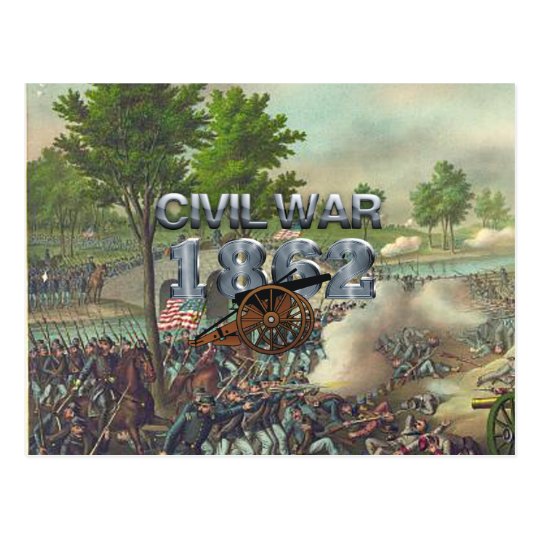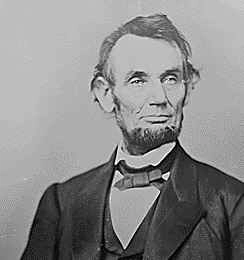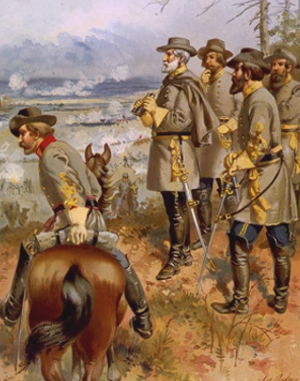Civil War Timeline - Major Battles
For four years from 1861-1865, battles were waged around the landscape of the United States, pitting brother against brother in a Civil War that would change the history of the USA forever. Over 720,000 of our citizens would perish in the battle for state's rights and slavery. Major battles were fought from Pennsylvania to Florida, from Virginia to New Mexico, and in the end, there would be one nation, under God, and indivisible, that last trait in jeopardy through the first half of the 1860's. The battles listed below are considered Class A/B (Decisive/Major) battles by the American Battle Protection Program of the National Park Service.
-
1862, July to December
-
To the 1860s
Click here to Sponsor the page and how to reserve your ad.
-
Battle Timeline

1862
July 1, 1862 - Malvern Hill (Seven Days Battles) - Class A.
Strength: Union 54,000; Confederates 55,000.
Casualties: Union 3,000; Confederates 5,650.
Seventh battle of Lee's and McClellan's Seven Days Battles is held in three stages: artillery battle, minor charge by General Armistead, and three subsequent charges by D.H. Hill, McGruder, and Lee. Federal artillery repulsed each charge, leading to a tactical Union victory, although General McClellan would withdraw after the battle to Harrison's Landing, contending that the Confederates outnumbered his troops by too many to continue toward Richmond.
August 9, 1862 - Battle of Cedar Mountain - Class B.
Strength: Union 8,030; Confederates 16,868.
Casualties: Union 2,353; Confederates 1,338.
In the first of the Northern Virginia battles, Stonewall Jackson defeats the attack of Union General Banks who attempted to advance into central Virginia.
August 25-27, 1862 - Battles of Manassas Junction - Class A.
Strength: Union, Detachements of the Army of Virginia; Confederates, Army of Northern Virginia left wing.
Casualties: Union 400-450; Confederates 173.
Confederate attempts prior to the 2nd Battle of Bull Run to take the Union supply depot at Manassas Junction and destroy it. Three engagements; Bristoe Station, Kettle Run, and Bull Run Bridge. Stonewall Jackson would move to the Bull Run battlefield on the night of August 27.
August 28-30, 1862 - 2nd Manassas - Class A.
Strength: Union 77,000; Confederates 50,000.
Casualties: Union 14,462; Confederates 7,298.
Fought over much of the same ground as 1st Manassas one year earlier, General Robert E. Lee would defeat Pope's Union forces when reinforcements of James Longstreet surprised the Union on the third day of fighting with the largest simultaneous mass assault of the war, 25,000 men, pushing the Union across Bull Run.
August 29-30, 1862 - Battle of Richmond, Kentucky - Class B.
Strength: Union 6,850; Confederates 6,500.
Casualties: Union 5,353, including 4,303 captured; Confederates 451.
First major battle of the Kentucky campaign saw a surprising Confederate victory by General Edmund Kirby Smith against the Union force defending the town. Confederates now had access to Frankfort and Lexington.
September 1, 1862 - Battle of Chantilly - Class B.
Strength: Union 6,000; Confederates 20,000.
Casualties: Union 1,300; Confederates 800.
Inconclusive battle when Stonewall Jackson attempted to cut off the Union line of retreat, but two Union divisions halted his success.
September 12-15, 1862 - Battle of Harpers Ferry - Class B.
Strength: Union 14,000; Confederates 21-26,000.
Casualties: Union 12,636, including 12,419 captured; Confederates 286.
While Robert E. Lee conducted his Maryland campaign, he sent General Stonewall Jackson to the armory town of Harpers Ferry to capture the Union garrison. Surrounded by fifty guns, Union General Miles surrendered the garrison and town. Stonewall Jackson would march his troops to Antietam two days later.
September 14, 1862 - Battle of South Mountain - Class B.
Strength: Union 28,000; Confederates 18,000.
Casualties: Union 2,325; Confederates 2,685.
Union victory at three gaps in the South Mountain passes; Fox's, Turner's, and Crampton's allows enough delay in the divided force of General Lee to allow his army time to reach Sharpsburg, Maryland and the subsequent Antietam battlefield.
September 17, 1862 - Antietam - Class A.
Strength: Union 87,000; Confederates 38,000.
Casualties: Union 12,410; Confederates 10-13,000.
Bloodiest day of the Civil War occurs in areas of the Cornfield, Bloody Lane, and Burnside Bridge. Union tactical victory when Confederates abandoned the field the next day, allowing President Lincoln to announce the Emancipation Proclamation, which prevented England and France from recognizing the Confederacy as a nation.
October 3-4, 1862 - Second Battle of Corinth - Class B.
Strength: Union 23,000; Confederates 22,000.
Casualties: Union 2,520; Confederates 4,233.
General William Rosecrans defeated the troops of General Earl Van Dorn at the railroad junction at Corinth. Van Dorn's men would be allowed to escape, with Rosecrans receiving criticism from U.S. Grant about the delay of pursuit.
October 8, 1862 - Battle of Perryville, Kentucky - Class A.
Strength: Union 55,000; Confederates 16,000.
Casualties: Union 4,241; Confederates 3,396.
Inconclusive battle in the Kentucky campaign turns into tactical Union victory when Confederate General Bragg withdraws from Kentucky into Tennessee, leaving the state in Union control for the remainder of the war.
December 7, 1862 - Prairie Grove, Arkansas - Class B.
Strength: Union 9,216; Confederates 11,059.
Casualties: Union 1,251; Confederates 1,317.
Tactical draw, but Union victory in the sense that they remained on the battlefield while Confederates troops retreated to Van Buren, effectively allowing Union control of northwest Arkansas for the remainder of the war.
December 11-15, 1862 - Battle of Fredericksburg - Class A.
Strength: Union 122,000; Confederates 78,500.
Casualties: Union 12,653; Confederates 4,201.
Futile attempt by new Union commander General Burnside to cross the Rappahannock River into the city of Fredericksburg and charge Marye's Heights. Battles at other locations on the field and the subsequent withdraw to the other side of the river signaled Burnside's defeat, and the mud march of later days only underscores the poor decisions during the battle.
December 26-29, 1862 - Battle of Chickasaw Bayou - Class B.
Strength: Union 30,720; Confederates 13,792.
Casualties: Union 1,776; Confederates 187.
Three Union divisions under General Sherman approach Vicksburg from the northeast along the Yazoo River while a fourth division lands upstream the next day. Confederate's strong position at Walnut Hills denied both frontal and flank assaults, resulting in their victory.
December 31, 1862 to January 2, 1863 - Battle of Stones River - Class A.
Strength: Union 43,400; Confederates 35,000.
Casualties: Union 12,906; Confederates 11,739.
Inconclusive battle with high casualties, ending with the Union repulse of two Southern attacks. Confederate withdrawal by General Bragg on January 3 ended hopes of the South controlling middle Tennessee.
Note: Photo above: Currier and Ives 1862 print of General Grant leading a charge in the 2nd day of the Battle of Shiloh. Image courtesy Library of Congress. Casualty and troop strength numbers from Wikipedia Commons via various sources.
History
Photo Bomb
Strength: Union, Detachements of the Army of Virginia; Confederates, Army of Northern Virginia left wing.
Casualties: Union 400-450; Confederates 173.
Confederate attempts prior to the 2nd Battle of Bull Run to take the Union supply depot at Manassas Junction and destroy it. Three engagements; Bristoe Station, Kettle Run, and Bull Run Bridge. Stonewall Jackson would move to the Bull Run battlefield on the night of August 27.
August 28-30, 1862 - 2nd Manassas - Class A.
Strength: Union 77,000; Confederates 50,000.
Casualties: Union 14,462; Confederates 7,298.
Fought over much of the same ground as 1st Manassas one year earlier, General Robert E. Lee would defeat Pope's Union forces when reinforcements of James Longstreet surprised the Union on the third day of fighting with the largest simultaneous mass assault of the war, 25,000 men, pushing the Union across Bull Run.
August 29-30, 1862 - Battle of Richmond, Kentucky - Class B.
Strength: Union 6,850; Confederates 6,500.
Casualties: Union 5,353, including 4,303 captured; Confederates 451.
First major battle of the Kentucky campaign saw a surprising Confederate victory by General Edmund Kirby Smith against the Union force defending the town. Confederates now had access to Frankfort and Lexington.
September 1, 1862 - Battle of Chantilly - Class B.
Strength: Union 6,000; Confederates 20,000.
Casualties: Union 1,300; Confederates 800.
Inconclusive battle when Stonewall Jackson attempted to cut off the Union line of retreat, but two Union divisions halted his success.
September 12-15, 1862 - Battle of Harpers Ferry - Class B.
Strength: Union 14,000; Confederates 21-26,000.
Casualties: Union 12,636, including 12,419 captured; Confederates 286.
While Robert E. Lee conducted his Maryland campaign, he sent General Stonewall Jackson to the armory town of Harpers Ferry to capture the Union garrison. Surrounded by fifty guns, Union General Miles surrendered the garrison and town. Stonewall Jackson would march his troops to Antietam two days later.
September 14, 1862 - Battle of South Mountain - Class B.
Strength: Union 28,000; Confederates 18,000.
Casualties: Union 2,325; Confederates 2,685.
Union victory at three gaps in the South Mountain passes; Fox's, Turner's, and Crampton's allows enough delay in the divided force of General Lee to allow his army time to reach Sharpsburg, Maryland and the subsequent Antietam battlefield.
September 17, 1862 - Antietam - Class A.
Strength: Union 87,000; Confederates 38,000.
Casualties: Union 12,410; Confederates 10-13,000.
Bloodiest day of the Civil War occurs in areas of the Cornfield, Bloody Lane, and Burnside Bridge. Union tactical victory when Confederates abandoned the field the next day, allowing President Lincoln to announce the Emancipation Proclamation, which prevented England and France from recognizing the Confederacy as a nation.
October 3-4, 1862 - Second Battle of Corinth - Class B.
Strength: Union 23,000; Confederates 22,000.
Casualties: Union 2,520; Confederates 4,233.
General William Rosecrans defeated the troops of General Earl Van Dorn at the railroad junction at Corinth. Van Dorn's men would be allowed to escape, with Rosecrans receiving criticism from U.S. Grant about the delay of pursuit.
October 8, 1862 - Battle of Perryville, Kentucky - Class A.
Strength: Union 55,000; Confederates 16,000.
Casualties: Union 4,241; Confederates 3,396.
Inconclusive battle in the Kentucky campaign turns into tactical Union victory when Confederate General Bragg withdraws from Kentucky into Tennessee, leaving the state in Union control for the remainder of the war.
December 7, 1862 - Prairie Grove, Arkansas - Class B.
Strength: Union 9,216; Confederates 11,059.
Casualties: Union 1,251; Confederates 1,317.
Tactical draw, but Union victory in the sense that they remained on the battlefield while Confederates troops retreated to Van Buren, effectively allowing Union control of northwest Arkansas for the remainder of the war.
December 11-15, 1862 - Battle of Fredericksburg - Class A.
Strength: Union 122,000; Confederates 78,500.
Casualties: Union 12,653; Confederates 4,201.
Futile attempt by new Union commander General Burnside to cross the Rappahannock River into the city of Fredericksburg and charge Marye's Heights. Battles at other locations on the field and the subsequent withdraw to the other side of the river signaled Burnside's defeat, and the mud march of later days only underscores the poor decisions during the battle.
December 26-29, 1862 - Battle of Chickasaw Bayou - Class B.
Strength: Union 30,720; Confederates 13,792.
Casualties: Union 1,776; Confederates 187.
Three Union divisions under General Sherman approach Vicksburg from the northeast along the Yazoo River while a fourth division lands upstream the next day. Confederate's strong position at Walnut Hills denied both frontal and flank assaults, resulting in their victory.
December 31, 1862 to January 2, 1863 - Battle of Stones River - Class A.
Strength: Union 43,400; Confederates 35,000.
Casualties: Union 12,906; Confederates 11,739.
Inconclusive battle with high casualties, ending with the Union repulse of two Southern attacks. Confederate withdrawal by General Bragg on January 3 ended hopes of the South controlling middle Tennessee.
Note: Photo above: Currier and Ives 1862 print of General Grant leading a charge in the 2nd day of the Battle of Shiloh. Image courtesy Library of Congress. Casualty and troop strength numbers from Wikipedia Commons via various sources.
History
Photo Bomb
Strength: Union 23,000; Confederates 22,000.
Casualties: Union 2,520; Confederates 4,233.
General William Rosecrans defeated the troops of General Earl Van Dorn at the railroad junction at Corinth. Van Dorn's men would be allowed to escape, with Rosecrans receiving criticism from U.S. Grant about the delay of pursuit.
October 8, 1862 - Battle of Perryville, Kentucky - Class A.
Strength: Union 55,000; Confederates 16,000.
Casualties: Union 4,241; Confederates 3,396.
Inconclusive battle in the Kentucky campaign turns into tactical Union victory when Confederate General Bragg withdraws from Kentucky into Tennessee, leaving the state in Union control for the remainder of the war.
December 7, 1862 - Prairie Grove, Arkansas - Class B.
Strength: Union 9,216; Confederates 11,059.
Casualties: Union 1,251; Confederates 1,317.
Tactical draw, but Union victory in the sense that they remained on the battlefield while Confederates troops retreated to Van Buren, effectively allowing Union control of northwest Arkansas for the remainder of the war.
December 11-15, 1862 - Battle of Fredericksburg - Class A.
Strength: Union 122,000; Confederates 78,500.
Casualties: Union 12,653; Confederates 4,201.
Futile attempt by new Union commander General Burnside to cross the Rappahannock River into the city of Fredericksburg and charge Marye's Heights. Battles at other locations on the field and the subsequent withdraw to the other side of the river signaled Burnside's defeat, and the mud march of later days only underscores the poor decisions during the battle.
December 26-29, 1862 - Battle of Chickasaw Bayou - Class B.
Strength: Union 30,720; Confederates 13,792.
Casualties: Union 1,776; Confederates 187.
Three Union divisions under General Sherman approach Vicksburg from the northeast along the Yazoo River while a fourth division lands upstream the next day. Confederate's strong position at Walnut Hills denied both frontal and flank assaults, resulting in their victory.
December 31, 1862 to January 2, 1863 - Battle of Stones River - Class A.
Strength: Union 43,400; Confederates 35,000.
Casualties: Union 12,906; Confederates 11,739.
Inconclusive battle with high casualties, ending with the Union repulse of two Southern attacks. Confederate withdrawal by General Bragg on January 3 ended hopes of the South controlling middle Tennessee.
Note: Photo above: Currier and Ives 1862 print of General Grant leading a charge in the 2nd day of the Battle of Shiloh. Image courtesy Library of Congress. Casualty and troop strength numbers from Wikipedia Commons via various sources.
History
Photo Bomb
Strength: Union 9,216; Confederates 11,059.
Casualties: Union 1,251; Confederates 1,317.
Tactical draw, but Union victory in the sense that they remained on the battlefield while Confederates troops retreated to Van Buren, effectively allowing Union control of northwest Arkansas for the remainder of the war.
December 11-15, 1862 - Battle of Fredericksburg - Class A.
Strength: Union 122,000; Confederates 78,500.
Casualties: Union 12,653; Confederates 4,201.
Futile attempt by new Union commander General Burnside to cross the Rappahannock River into the city of Fredericksburg and charge Marye's Heights. Battles at other locations on the field and the subsequent withdraw to the other side of the river signaled Burnside's defeat, and the mud march of later days only underscores the poor decisions during the battle.





